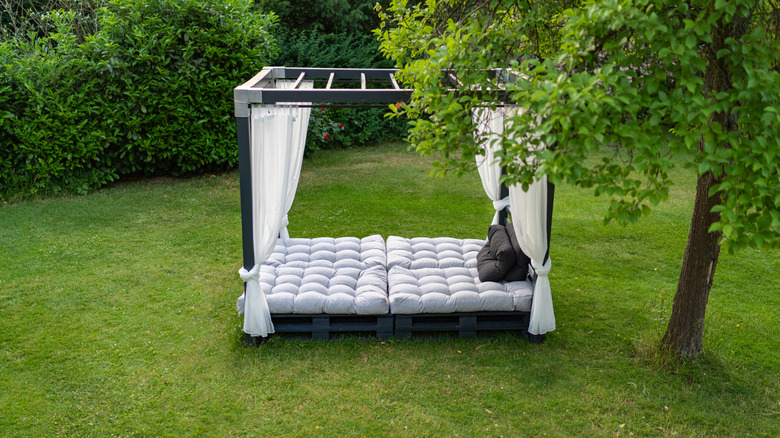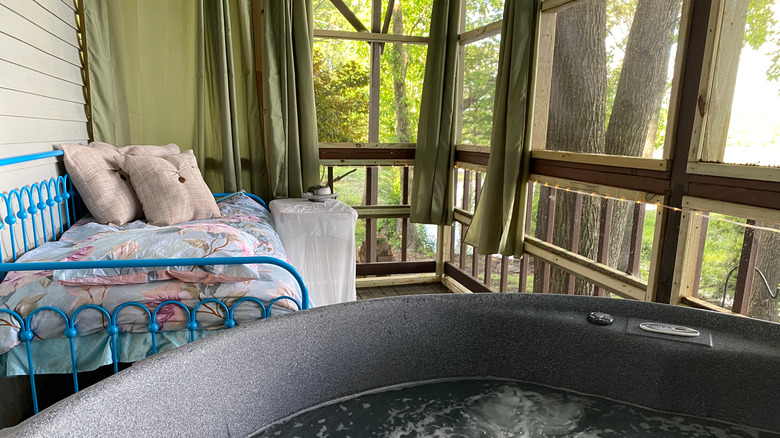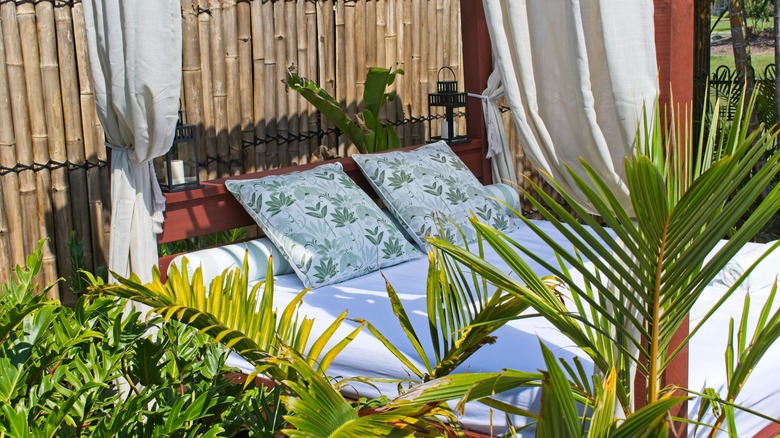How To Make Your Outdoor Daybed Last Through All The Seasons
Outdoor daybeds can be a luxurious place to spend your summer afternoons in style, perfect for reading, lounging, and napping out in nature. They range from small swinging daybeds that enhance your front porch to expansive outdoor models with elaborate canopies and mosquito netting. The best ones are designed for weathering climate variations and hazards like moisture and pests. The considerations for a daybed that will last for years include materials, construction, upkeep, and more. Which daybed you choose, as well as how you care for it and where you put it, can be a big determinant on its longevity and comfortableness in the seasons to come.
By keeping these things in mind when choosing and maintaining it, you can keep your daybed looking and feeling good, as well as eliminate hazards like sun damage and mold growth. Whether your daybed purchase is a pricey investment piece or you created it from scratch like this fun DIY backyard daybed, these tips will help you enjoy the daybed through many seasons over many years.
Choosing an outdoor daybed for durability
One of the best ways to ensure your daybed is beautiful and functional for years is to consider the underlying materials before you even buy it. Make sure your frame and hardware are fit for the job. Some woods, like teak and cedar, work better than others because they are usually treated to withstand moisture and keep pests like termites away, which can damage the bed over time. Other minerals, like wrought iron, treated steel, and aluminum are great choices for their durability and weather-fastness. While wicker beds can be beautiful, they are ultimately far less durable, harder to clean, and subject to moisture damage and mold. Instead, choose a treated or synthetic wicker for a similar look. Plastic or resin are easy to keep clean, but may be less durable in direct sun or extreme cold.
Other material considerations include the cushions and other soft elements that make the bed comfortable. Covers in polyester, cotton canvas, and other synthetics like olefin and acrylic are popular choices for outdoor pieces. Not only are they water resistant, but they are less liable to suffer from sun damage and can inhibit the growth of mold in climates where that may be a danger.
Placing and caring for your outdoor daybed
Where you put your outdoor daybed is also important. An overhung area like a summer sleeping porch or a gazebo can be perfect for keeping your daybed out of the sun and away from direct rain and standing water. If your daybed must be out in the open, invest in an all-over waterproof outdoor furniture cover that you can put on when the furniture is not in use. You can also spray soft fabrics with a protectant, like Scotchgard Sun & Water Shield or Sunbrella spray, to help keep your furniture and cushions from fading or becoming discolored.
Clean your mattress and cushions regularly throughout the year, giving them a rub down with soap and water periodically, and brush off debris, especially after storms or in spring and fall when they can be subject to fallen leaves and pollen residue or sap. While warmer climates may be able to use their daybed all year, in colder climates, you will want to put it away during the coldest months of the year. To store your daybed away during the off-season, make sure to carefully prepare it by vacuuming, laundering covers, and wiping down the frame. Store it indoors beneath a cover that can help protect it from pests or damage during the off season.


